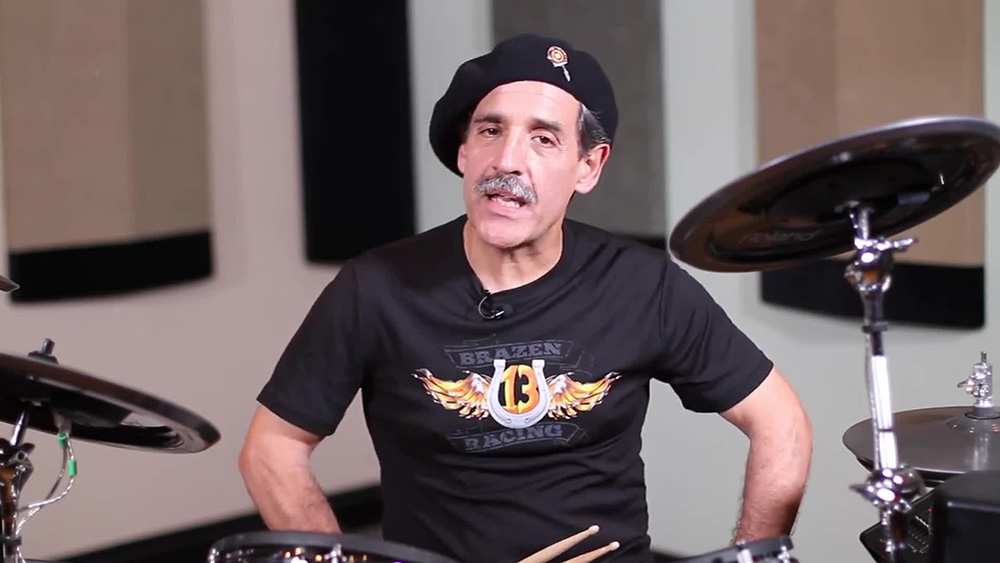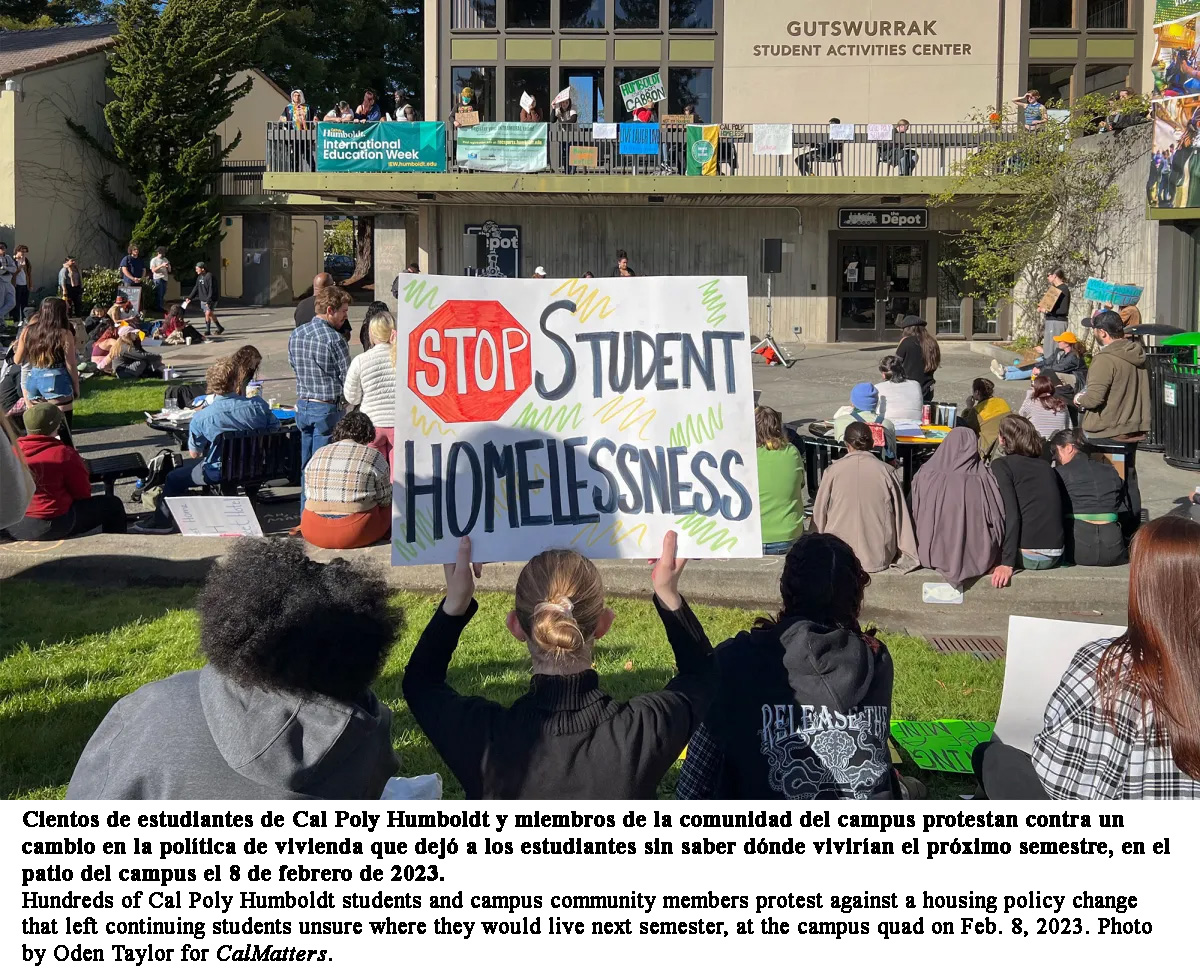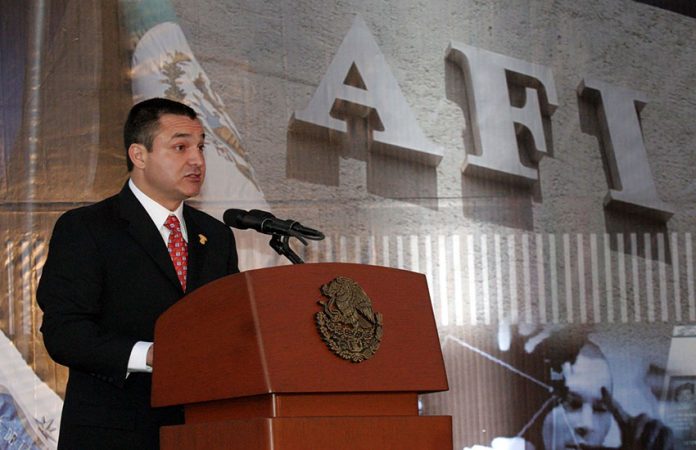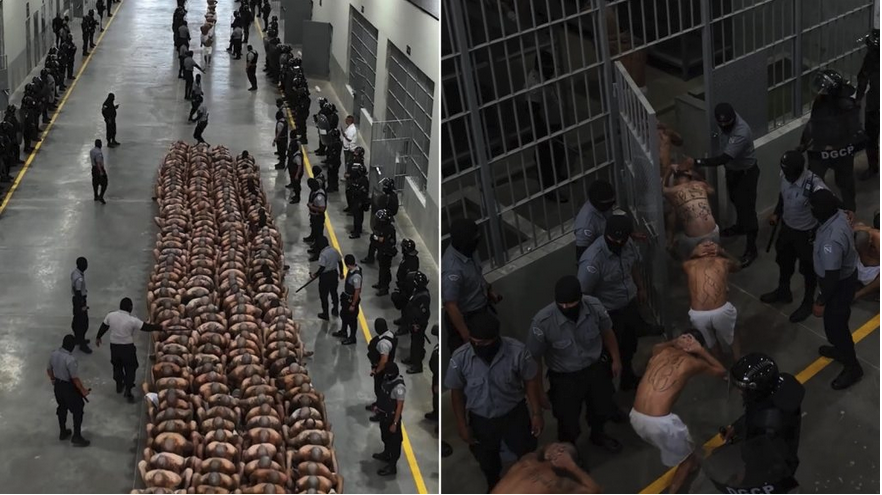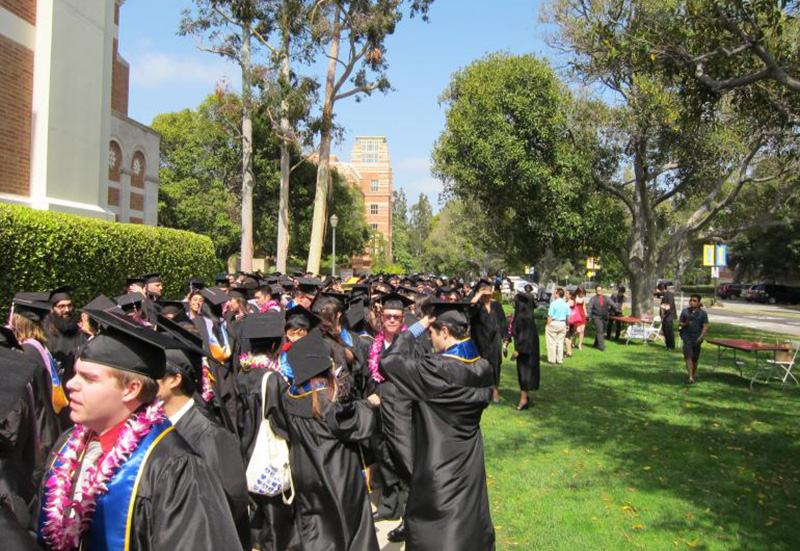Officials hope to double enrollment at Cal Poly Humboldt by 2027. Plans to reserve all on-campus housing for first-years were scaled back last week after current students staged protests – but some returning students may still end up living in hotels or even on a barge. The uproar illustrates the severity of the state’s student housing crisis
by Oden Taylor
February 15, 2023 – When students decide to attend Cal Poly Humboldt, they likely see themselves living in the forest among the state’s largest redwood trees, high enough on a hill that they can see Humboldt Bay and the ocean in the distance. They probably don’t picture studying from a motel or a floating barge.
But that could be the reality for hundreds of returning students next academic year as the university prepares for an influx of enrollees drawn by its recent transformation from Humboldt State to Northern California’s first polytechnic university. When the university revealed Feb. 4 that incoming first-years would have priority for all on-campus housing – likely locking out returning students – the move sparked protests, a petition, and the founding of a new organization, Cal Poly Homeless, to fight the change.
In response to the backlash, Cal Poly Humboldt partially walked back its plans, saying it will now find on-campus beds for about half of the estimated 1,000 returning students who were set to be displaced from the 5,700-student campus. But the uproar illustrates how central student housing has become to just about any major higher education initiative in California, where skyrocketing housing prices have students living in cars and state lawmakers have set aside more than $2 billion over the next few years to build new dorms and on-campus apartments.
The university became a polytechnic campus last year, receiving more than $450 million in state funds to add new STEM courses with a focus on environmental sustainability and to build the infrastructure to support them. Enrollment is expected to grow by 50% in the next three years and double by 2029. Already, the university has received more than 19,000 applications for fall 2023, nearly twice as many as for fall 2022.
The state funds will help pay for the new off-campus Craftsman Mall housing complex, projected to open to about 1,000 residents in fall 2025. New on-campus housing, along with a parking structure, will house another 600 to 700 students – but that won’t open until summer 2027, the university says.
“I think our transition has been really fast, and we’re starting to see the effects of not planning properly for the influx of additional interest,” said Juan Giovanni Guerrero, the president of the university’s student government.
Cal Poly Humboldt currently has enough on-campus housing for a little more than one-third of its students – more than some campuses in the Cal State system, where many students commute. A 2018 study found nearly one in five of the university’s students had experienced homelessness, twice the Cal State system average.
Housing students on a barge
The university says it has been “looking into many creative solutions” to bridge the gap until new housing is built, and has signed contracts with three local hotels – the Comfort Inn, Motel 6 and Super 8 – about three miles from campus to provide a total of 350 beds. Administrators also said they are considering housing students in “floating apartments or studios.”
Eureka City Manager Miles Slattery confirmed that the city has been discussing logistics for parking a barge in Humboldt Bay, and identified it as the Bibby Renaissance, which can house as many as 650 guests and crew members. The “floating hotel” is often used to shelter workers in remote locations. An online virtual tour shows spartan bedrooms, a gym and a roof terrace.
During the COVID-19 pandemic, housing students in hotels became a temporary solution to overcrowding and housing insecurity, including at a number of University of California campuses. Cal Poly Humboldt has housed more than 100 upperclassmen at the Comfort Inn since 2022.
But Cal Poly Humboldt students have said the hotel plan compromises their safety because it puts them in close contact with homeless people in the local community who may be mentally ill, doesn’t guarantee access for disabled students and places students of color and LGBTQ students in areas where they’re likely to experience bigotry.
Last week, hundreds of Cal Poly Humboldt students and community members gathered in the campus quad to hear hours of testimony from students affected by the change. Students set up tents and cardboard boxes to symbolize the housing options they are facing.
“The school made this decision without talking to any students. They just decided, ‘Hey, we’re gonna send all of the students to motels,’ and so we want to make sure that we are the ones involved in this decision,” said Annabel Crescibene, a sophomore involved with Cal Poly Homeless. The new organization has set up an Instagram account and plans to create a podcast for students to share their housing woes.
Many of the speakers at the protest talked about fleeing abusive homes and experiencing homelessness and housing instability for most of their lives. The campus has provided them with a safe haven, they said – but that’s not the case for the surrounding community.
Sydnie Berglund, a sophomore at Cal Poly Humboldt, works as a front desk agent at the Hampton Inn, which is next to the Motel 6 that will be used to house students this fall. She said that she always feels unsafe outside of the hotel because of the large number of homeless people who live there and throughout the small town of Arcata. Once when getting off work late at night, she said, she witnessed a woman being assaulted by a man with a sword near the hotel parking lot.
“This is not an adequate place to house students ever, unless they are going to address the homelessness issue,” said Berglund. “Not that they as people are the problem, but how they don’t have resources and what they have to resort to to survive, that is the problem.”
Environmental concerns and opposition from neighbors have slowed the development of affordable housing in surrounding Humboldt County, housing advocates say. Students also sometimes report being discriminated against when they try to find housing off-campus, said Chant’e Catt, the university’s off-campus housing coordinator.
“NIMBY-ism is huge — not in my backyard — and there is a lot of fear of taking the rural city and overexposing it to the metropolitan,” Catt said.
Students involved in Cal Poly Homeless are demanding that all housing both on and off campus be safe and accessible – including resolving mold problems that some students have reported in the dorms – that transportation be provided, and that the university increase amenities in off-campus housing and lower the cost.
Some students and parents are also calling for a cap on admissions until the infrastructure is built to support a larger campus population. A Change.org petition started by Cal Poly Humboldt parents urging the university to accommodate returning students on campus has gathered more than 4,000 signatures.
“If Cal Poly Humboldt does not have the facilities to properly house their student body, they should not increase enrollment and should work with the CSU to address this crisis properly,” the petition reads.
In response, the university said Friday that returning students can apply for on-campus housing – though only 600 beds will be reserved for them – and that officials are looking into how they could provide students living in hotels with access to kitchens and study spaces.
Some returning students with disabilities are entitled to single-room accommodation, which could affect the number of beds available.
Hotels used for housing students will have fenced-in perimeters with key cards required to access the buildings, the university said in an online FAQ, and only students and university staff will be staying there. The university also promised to provide shuttle transportation to campus with extended hours.
The promise of a Cal Poly
The conversion of Humboldt State to Cal Poly Humboldt is meant to help Cal State meet student demand for STEM careers. The campus is adding new programs in software engineering, marine biology, applied fire science and management, and cannabis studies, among others.
“Cal Poly Humboldt will be a polytechnic for the 21st century, preparing students to address the urgent issues our society faces,” Cal Poly Humboldt president Tom Jackson said after Cal State trustees approved the name change last year.
University leaders also hoped to reverse a trend of declining enrollment at the campus; the number of incoming undergraduates fell by nearly 40% between 2017 and 2022. Cal State has said it plans to withhold some state funding beginning in 2024 for campuses that fall 10% below their enrollment targets.
As enrollment declined at Humboldt, on-campus housing development also stagnated. Now the campus is playing catch-up.
“Essentially, with polytech designation came funding for new housing, but that housing takes time to build,” said Cal Poly Humboldt spokesperson Grant Scott-Goforth.
Studies have shown that students who live on campus are more likely to continue their education from one year to the next, said Hans Johnson, a senior fellow at the Public Policy Institute of California who focuses on higher education. “Living on campus gives students that sense of belonging and being part of the university,” he said.
It’s common for universities to guarantee on-campus housing for first-years but not for returning students, he said – but that strategy breaks down when there isn’t enough local housing.
“Ideally if you’re going to increase the size of the university you would build housing and have the housing ready to go on day one when you have a larger population,” he said. “But all these things are moving targets — you don’t know exactly how many students you’re going to get, and how many are going to want to move out of the dorms and how many are going to want to stay in. You have these periods where you have to scramble to find out what you’re going to do.”
Rick Toledo, a transfer student who started at Cal Poly Humboldt this semester, said he believes that in general, the Cal Poly change was a good idea for the university. But he worries about the impact of the housing crunch on students with disabilities, like himself – and on the new students who will arrive next year.
“They’re gonna bring in new freshmen who have no idea what’s going on,” he said. “They’re going to give them the good life on campus and then kick them into a motel the next semester.”
(Taylor is a fellow with the CalMatters College Journalism Network, a collaboration between CalMatters and student journalists from across California. Former fellow Hannah Getahun and network editor Felicia Mello contributed reporting. This story and other higher education coverage are supported by the College Futures Foundation.)





